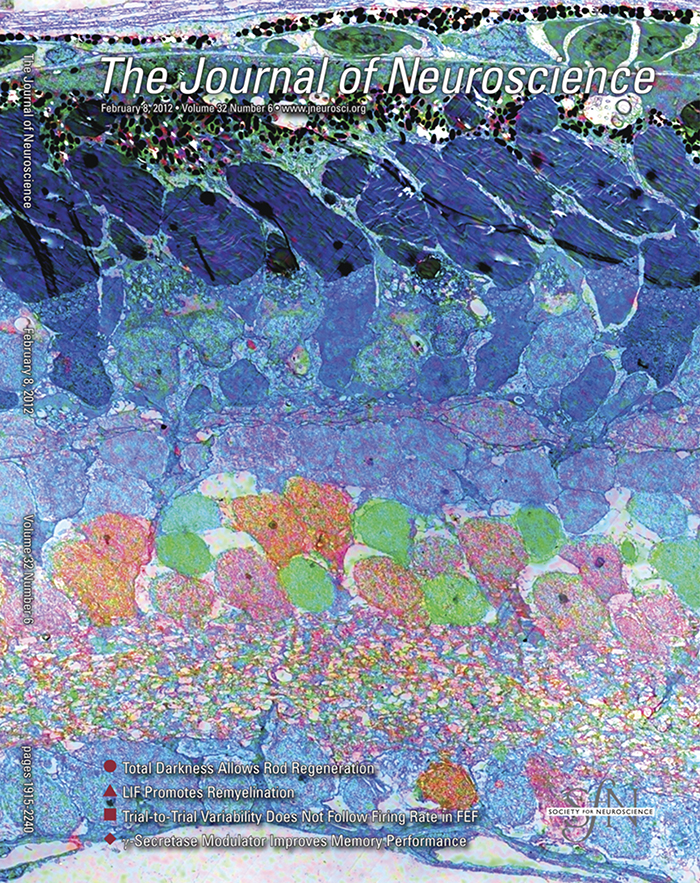This paper (we got the cover) in the Journal of Neuroscience is the result of a collaborative effort between Damian C. Lee, Felix R. Vazquez-Chona, W. Drew Ferrell, Beatrice M. Tam, myself, Robert E. Marc, and Orson L. Moritz.
The retinas of creatures other than us humans have the intriguing ability to regenerate. This study evaluated the capacity of the Xenopus laevis retina to regenerate photoreceptor cells after cyclic light-mediated acute rod photoreceptor degeneration in a transgenic Xenopus model of a blinding disease, retinits pigments. The use of cyclic light is one way to cause photoreceptors to degenerate, so after discontinuation of the light damage, we watched what happened to the photoreceptors over a 3 week recovery period. We were also interested in the metabolomic states of photoreceptors, so we used computational molecular phenotyping to monitor the metabolic states of all neurons in the retina, finding that retinal degeneration in the P23H rhodopsin mutation could be partially reversed, with regeneration of rod photoreceptors recovering normal morphology (including full-length rod outer segments) by the end of the 3 week recovery period. In contrast, retinal degeneration mediated by directly induced apoptosis did not recover in the 3 week recovery period. Dystrophic rod photoreceptors that remain metabolically active were identified as the likely source of rod photoreceptor regeneration in the P23H retinas.

One Reply to “Dysmorphic Photoreceptors in a P23H Mutant Rhodopsin Model of Retinitis Pigmentosa Are Metabolically Active and Capable of Regenerating to Reverse Retinal Degeneration”